Welcome to the finale of my Orioles Top 50 Prospects for 2018 countdown. If you want to check out the stats for these players, click their name and it’ll take you to their Baseball Reference page.
Catch up with links to the previous installments below.
#1-10
Rank – Name – Position – Highest Level – Age on opening day 2018
Tier 4 – Future Value 45
#10 – Tanner Scott – LHP – MLB – 23
The Orioles drafted Scott in the 6th round of the 2014 draft out of Junior College. Other than his pro debut, he had been pitching primarily in relief roles as he made his way through the O’s system. In 2017, the Orioles tried a new developmental approach, letting him make 3 inning starts on a regular schedule. This allowed more time to work on his slider and also the chance to get a regular bullpen session in between game outings.
The approach worked. Scott’s fastball was as good as ever, touching 102mph and sitting comfortably in the 97-99 range with only a moderate effort delivery. The fastball offers late life as well, making it a true grade 80 pitch. He lost the movement on the fastball after hitting the 7 day disabled list late in the season with blister issues, but I don’t think it’s an ongoing concern. Scott’s second pitch, the slider, had been wildly erratic coming into the 2017 season, but by the end of the year, it was a solidly plus pitch. He throws it anywhere from 85-92, I like it better at the lower end of the range. At that speed, it offers a nasty sweeping motion with some drop as well.
Control is still an issue for Scott. There are some inconsistencies in the delivery, including dropping his glove hand as he comes to the plate and he can lose his mechanics from time to time. He has improved though, and he can throw his slider for strikes now and even when he misses, he’s around the plate more. Less wasted pitches. The stuff is good enough for a middle relief role even without further improvement, he’s just that hard to barrel up. If his control takes a step forward, he’s a high leverage reliever and likely a good one.
Tier 3 – Future Value 50
#9 – Alex Wells – LHP – Low A – 21
The Orioles signed Wells out of Australia in 2015 for a $300K bonus, he was 18 years old at the time. He made his debut in short season Aberdeen in 2016, throwing 62 innings of 2.15 ERA ball. He didn’t get much love as a prospect due to his underwhelming repertoire and not so projectable frame. In 2017 he threw 140 innings in low A Delmarva and had similarly excellent results (2.38 ERA).
Alex stands 6′ 1″ and appears to already be filled out. He’s got a solid, athletic build and he’s similarly athletic on the mound. He has a smooth, low-effort 3/4 delivery that he repeats with precision. It features some deception, as he stays closed for a long time as he comes to the plate. He lands easy and balanced and fields his position well. It honestly looks like he’s throwing warm-up pitches out there.
His fastball is only 87-89mph, touching 91 and is fairly flat. It plays on the plate (at least at this level) against LHB, but gets crushed against RHB. He has an average to fringe average curveball. It has good shape, but lacks the sharpness or bite to generate whiffs at a high rate. His best pitch is his change-up. If it isn’t plus now, it’ll be there soon. It’s not a big tumbler, but it’s identical to his fastball until it’s too late.
If that arsenal doesn’t sound too exciting, you are not alone. Wells is a prospect who is hard to assess because he doesn’t have the kind of stuff you expect to see from top guys. What he does have is an extremely advanced ability to work hitters over. He works fast and locates all of his pitches to all quadrants of the plate. Good hitters are legitimately uncomfortable against him, they resort to stepping out frequently and trying to call time as he’s starting his delivery in order to try and disrupt his rhythm. He projects to double plus control and plus or better command. He’ll need it for his stuff to play at the highest level.
To conclude this write-up, I’ll leave you all with a little anecdote that describes why I think Wells has a MLB future. Early in the year, Wells gave up a number of HRs on fastballs that he tried to run down and in on RHB. They were on target, but the hitters saw the ball and dropped the head of the bat on it. Later in the season, he adjusted completely, he’d throw the fastball in on the hands of RHBs, and it completely handcuffed guys. It was clearly on purpose and it gave him another weapon to get RHBs out. Alex Wells finds a way to get people out.
#8 – Keegan Akin – LHP – A+ – 23
The Orioles 2nd round pick in 2016, Akin looked to build upon a strong Aberdeen debut in his 2nd season in the organization. He skipped Low A and started in A+ Frederick. It got off to a rocky start and Akin struggled to find consistency on the mound. He would lose his mechanics from time to time and there were reports he showed up to camp in less than ideal shape. In June and early July he began putting together strong outings before an undisclosed injury sidelined him for the rest of the season. He returned healthy for a strong Arizona Fall League showing.
Akin throws 4 pitches. He generates good arm speed so he gets to his velocity with a fairly low effort delivery. He has a four seam fastball that sits 91-93mph and can touch the mid 90s with rise. It works well up in the zone and away from RHB for swinging strikes. He also throws a slider that looks more like a hard curveball around 79-81. It has tight two-plane break and he can throw it for strikes. It plays against hitters on both sides of the plate. He shows great arm speed on his change-up and it has some late fade and tumble when located down in the zone. He also throws a two seam fastball that is a couple ticks below his four-seamer with benign sink and tail. I liked him better when he wasn’t throwing it as much, it doesn’t miss bats and generally led to hard contact.
The Orioles have simplified his delivery a bit from his college days. He doesn’t turn away from the plate as much anymore and he has reduced the amplitude of his leg kick. It’s a simple, compact delivery now that should lead to solid control/command eventually. He still gets some deception out of his glove arm action, he points it right at the plate and it appears to hinder the hitter’s ability to pick up the ball. He does come open a bit early and perhaps loses some velocity and deception there, but that’s just my opinion.
If he stays in shape, I see him as a #4 starter type, with three above average pitches (4S FB, SL, CH) and average control/command. He has the tools and delivery to stick as a starter as long as his body holds up. If not, his Arizona Fall League stint showed that his stuff will play up in a bullpen role which gives him a solid relief floor.
#7 – DJ Stewart – LF – AA – 24
When the Orioles selected DJ Stewart 25th overall in the 2015 draft out of Florida State it was seen as a stats over scouting pick. After all, Stewart had been excellent in the ACC, slugging 15 HR and reaching base safely 50% of the time in his Junior season. Scouts however disliked his running back-esque body and extreme crouch batting stance.
The Orioles immediately started working to change his stance. In Aberdeen he’d take batting practice with a more upright stance and then revert to his crouch stance in games. The next season (between Delmarva and Frederick), he showed that batting practice stance in game but his hand were still very high pre-swing. It seemed to cause timing issues. He was sent to the Arizona Fall League and by then he’d moved his hands lower. The swing was stiff and robotic there and it looked like he just wasn’t comfortable with it. Finally, in 2017 he got comfortable with his new swing and started to show why he was drafted in the first round. Stewart said in a mid-season interview with PressBox Online that he finally felt comfortable at the plate after many adjustments.
Stewart has average tools for the most part. He’s an average runner, and has average game power, average to above average hit, average glove, and a fringe arm (ok for LF but won’t play elsewhere). Those tools play up though due to Stewart’s hard-nosed, smart playing style. At the plate he has a patient approach and doesn’t get cheated. Early in counts he looks for pitches and airs it out. When he falls behind he has a knack for fouling off pitches and extending at bats. On the bases, he’s aggressive, stealing bases, and turning singles into doubles. In LF, he has a good first step and acceleration.
Stewart isn’t a big upside guy. He just doesn’t have the tools. He is a good baseball player though. He’s ranked this highly because he’s likely an average regular in LF and pretty close to MLB ready.
#6 – Cedric Mullins – CF – AA – 23 (Pictured)
The Orioles grabbed Mullins in the 13th round of the 2015 draft. He had a decent debut for short season Aberdeen, but really jumped onto the radar in 2016 with Delmarva. He smacked 61 extra base hits and stole 30 bases while playing a strong CF. Thanks to a strong cameo in Spring Training 2017 – where he took Craig Kimbrel deep and caught Buck’s eye – he skipped Frederick and spent 2017 as the leadoff hitter for Bowie. Although he missed significant time with hamstring issues, he still managed to hit 13 HR in only 76 games.
Mullins isn’t a big guy, he’s listed at 5′ 8″ and that may be generous. He’s a powerhouse though, lean and muscular. His carrying tool is his glove in CF, his defense there would play in the majors today. Even with the hamstring problems, he still showed the range, body control and instincts of a plus defender. His arm is passable in CF but isn’t a strength. On the basepath, Mullins had previously been effective at stealing bases, but in the looks I got this year, he looked extremely uncomfortable taking leads. I assume that had something to do with his hamstring injuries.
At the plate, Mullins is a switch-hitter. He utilizes an exaggerated load where he almost turns away from the pitcher. This allows him to create great separation between his hips and his upper half generating significant torque. He gets the bat into the zone early which enables him to make a lot of contact as well. He has a smooth, effortless swing from the left side. From the right side, the swing is stiffer, leading to a slower bat. This is the biggest problem with his profile as a hitter, he struggles against LHP. He needs to improve that RH swing or drop switch hitting if he wants to be an everyday player.
So right now he profiles as a CF with above average to plus defense, who sits against LHP. Some are discouraged by that projection, but he could still be an impact player in that scenario. He could start 75% of games and come on as a pinch runner or defensive replacement late in games. While he’s MLB ready defensively, his bat likely needs more seasoning in the minors. Late in the season, he was getting out sequenced by pitchers, expanding the zone and getting himself out. I think he figures it out, just needs to understand his zone a little better. Even if he doesn’t, he’s still got the floor of a solid 4th outfielder.
#5 – DL Hall – LHP – Rookie – 19
Here’s what I wrote about DL Hall for Notes From The Sally(follow link for the full Delmarva Shorebirds preview).
“I got the sense that the Orioles didn’t expect DL Hall to be available when they picked at #21, but were happy to scoop him up when he fell to them.”
“Hall is a relatively undersized LHP (6′ 0″ or 6′ 1″ depending on the source), but boasts a mid-90s fastball out of a typical 3/4 arm slot. He gets to that velocity with a moderate effort delivery, generating power from his athletic lower half. His fastball is fairly flat, but has some life when used up in the zone. His delivery has an aggressive rotational finish where he falls off glove-side that lends itself to control issues from time to time. He also shows a plus curveball that has serious depth and bite at it’s best. It’s less slurvy than you’d generally see from 3/4 lefties, a real power hook in the upper 70s to low 80s. There is a change-up as well that he didn’t use much in HS, it’s still in it’s infancy.”
“He had a brief, rough pro debut. He struggled with control, but reports from instructs were much more positive. I think I’d expect him to start the 2018 campaign with the Shorebirds, perhaps piggy backing with another pitcher to limit his innings per start. Hall has the stuff to become a #2/#3 starter and a starter’s delivery, but he’s pretty raw and there is a lot of developmental work ahead. Like any HS pitcher, there is a chance he flames out along the way, but with his FB/CB combo, it’d probably take an injury to keep him from at least being a lefty in the pen down the road.”
Tier 2 – Future Value 55
#4 – Hunter Harvey – RHP – Low A – 23
The O’s selected Harvey with their first pick in the 2013 draft. After a strong debut, Harvey followed it up with 87 excellent innings in Delmarva at just 19 years old. He was shut down that year though with a flexor-mass strain. That didn’t stop Baseball America and others from ranking him among the top 100 prospects in baseball.
Unfortunately, this was just the beginning of his injury struggles. In 2015, he took a ball off his shin in spring training. It fractured his fibula. He healed up and began throwing, only to be shut down again with elbow stiffness. As a result, he didn’t pitch a competitive inning. Harvey went into 2016 presumably healthy, but ended up with a hernia that required surgery. When he returned, he only managed 12 innings before succumbing to Tommy John Surgery. After finishing rehab, Harvey returned to action this past July. He pitched 18 innings between Rookie, Short Season, and Low A ball. He had a normal off-season and seems healthy coming into the 2018 campaign.
After seeing Dylan Bundy lose a few ticks of velocity after TJS, it’s only normal to expect a similar fate for Harvey. That however, was not the case. His fastball was immediately back touching 97mph with life and downward plane. The plus curveball was back as well. While I haven’t seen it, there are reports he has an average or better change-up that he uses in bullpen sessions too. The best part is that he is achieving that velocity and stuff with a much lower effort delivery than pre-TJS. He still has excellent arm speed, but now has a stronger lower half to take some stress off the arm.
The Orioles will now try and resist the temptation of rushing Harvey to the majors. He’s gained a lot of good weight and he has a big league body. There is top of the rotation ceiling if he can hold the stuff he showed in 2017 and develop the change-up. With a healthy season in the minors, he should be ready to compete for a rotation spot in 2019.
#3 – Ryan Mountcastle – 3B/LF – MLB – 21
Mountcastle signed with the O’s after being selected 36th overall in the 2015 draft. He’d hit well at every stop, but really jumped onto the national radar after mashing 51 extra base hits in 88 games with Frederick this past year. So the Orioles promoted him to the AA Bowie Baysox and also moved him from SS to 3B. He’d played SS in high school and with the Orioles since being drafted, but his defense wasn’t strong there and a move seemed inevitable. He struggled with the Baysox as one of the youngest players in the Eastern League. He did improve as the season wound down and had some good moments including ripping a Mitch Keller (top 25 prospect in baseball) fastball for a home run. He held his own in AFL action and had a memorable moment in the Fall Stars game when he turned on a 99.6MPH Sandy Alcantara fastball for a double.
Mountcastle’s calling card is his excellent bat speed, it’s the best in the Orioles system. He can get to premium velocity without starting his swing early. He also has a good bat path with natural loft and leverage. He puts plenty of balls in the air, leading to 48 doubles in 2017. He’s still thin and has room to add muscle as he matures. His bat speed plus added strength give him a chance to be a plus hit, plus power guy at maturity. That is a profile that will play at any position.
Defensive position is the big question for Mountcastle. He didn’t look particularly good at 3B after getting moved off short. He has the hands and the agility for the infield, but his arm is well below average. It’s both arm strength and mechanics that are lacking. It needs to improve for him to even stick as a below average defender at 3B. I would like to see him at 2B because I feel his hands and fielding actions would be wasted in the outfield. That said, I think his likely position at the MLB level is LF.
Mountcastle has a ton of potential, despite his defensive limitations. Guys with his bat speed and bat path are rare. If he can stick at 3B or 2B, he has star upside. Even if he has to play 1B, he has a chance to hit enough to be an average player there.
#2 – Chance Sisco – C – MLB – 23
The Orioles picked up Sisco in the 2nd round of the 2013 draft. He was a high school SS who had recently transitioned to catching. He was considered bat-first at the time and it didn’t take long for his bat to live up to that label. He’s hit better than league average at every major stop while being young for the league. He owns a .311/.390/.426 triple slash in the minors. 2017 was his least productive season, he struck out more and walked less on his way to a .267/.340/.395 line. He got a taste of the majors in September and impressed in his limited opportunity, smacking a couple of home runs.
Sisco has a quick, smooth left handed swing. It’s a very easy motion and he can really make a ton of contact and spray line drives. There isn’t much hip separation to really generate torque, but he’s got enough bat speed to put a few in the seats. He has a patient approach and he really wears out RHP. He doesn’t see the ball as well from lefties and can expand the zone and get himself out. This would be a bigger concern if he doesn’t stay behind the plate, but as a catcher it’d be easy to shield him for tough LHP with his days off. Sisco while he’s not fast in general, is pretty fast for a catcher. He can leg out doubles and go first to third pretty well.
The big question everyone has with Sisco is will he stick behind the plate. His bat profiles really well as a catcher, but if he ends up in LF, it’s not particularly exciting. The big thing people tend to wring their hands about is his ability to throw out runners. He’s not good at it. Unlike Mountcastle, it’s not arm strength. Sisco has a solid, if unspectacular arm. It’s the footwork and release. He was only 22 last season so there is some reason to have hope for improvement.
He is ranked this high on my list because I think he sticks at catcher even if the catch and throw doesn’t improve. His receiving, blocking, and framing noticeably improved from 2016 to 2017. I don’t think he’s going to be an average defensive catcher, but he’ll be good enough to be an above average starter overall when you factor in the bat. Sisco is ready for the majors and will have a shot at winning at least a timeshare with Caleb Joseph in spring training. I think it’s likely he’ll be on the opening day roster.
Tier 1 – Future Value 60
#1 – Austin Hays – RF/CF – MLB – 22
The Orioles 3rd round pick out of Jacksonville University in 2016 was the first member of the entire draft class to make it to the majors. He raked in short season Aberdeen that year, prompting the Orioles to skip him straight to Frederick in 2017. He earned a mid-season promotion to Bowie and never stopped hitting. His minor league triple slash stands at an eye-popping .330/.370/.576. Hays joined the Orioles in September and struggled over 60 ABs against MLB pitching.
Hays isn’t the type of prospect who stands out immediately when you look at him. He isn’t the biggest or tallest guy, just an athletically built 6′ 1″. When you first see him in game action, the first thing that you notice is his effort. This guy lays out diving for balls in the outfield. He sprints out every ground ball and approaches every AB with laser-like focus. Obviously you don’t become one of the top prospects in baseball with just effort, but Hays has the tools to back it up.
Hays has a plus arm, plus hit, above average raw power, above average speed, and above average glove in RF. He also can hold his own in CF if necessary. He possesses excellent eye-hand coordination, and manipulates his swing very well with strong hands and wrists. This allows him to make consistently hard contact on tough pitches. He has an aggressive approach that some analysts have knocked him for, but he will make adjustments quickly from at bat to at bat. I think he’ll adjust and walk more if pitchers aren’t throwing him strikes.
Coming out of college, he didn’t show a ton of power, but the Orioles adjusted his swing, allowing him to get more hip separation. He now shows above average power that (at least in the minors) plays up in game due to the amount of hard contact he makes. One of the things that will determine if he’s just an average player or an All-Star caliber guy is whether he’s able to continue making that quality of contact against major league pitching.
In the field, Hays is a good athlete with a strong arm. He tracks balls well and has good speed for a corner outfielder. He can play CF, but he doesn’t really have that top gear most MLB CFers have and will probably slow a bit more as he ages. His main weakness as a fielder is that he can be over-aggressive, sometimes trying to make a huge throw instead of hitting the cut-off man or diving at an unreachable ball. I see this improving with maturity. He appears to take well to instruction.
Hays is the clear top prospect in the Orioles system. He is near MLB ready. He has perennial All-Star upside and it’s hard to see him being less than a starting RF. He’ll need to adjust to MLB pitching, but I think we’ll see him come out firing on all cylinders this spring in an attempt to make the opening day squad.
Discuss here
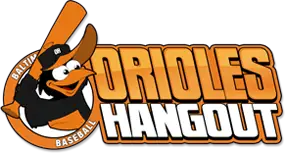
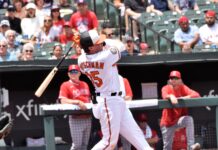
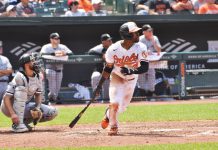
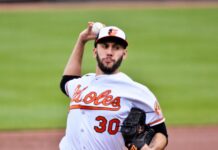
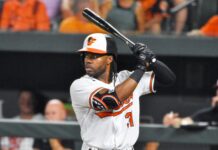
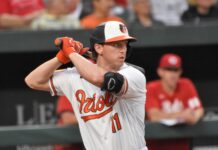
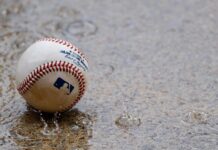
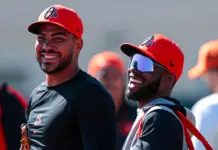
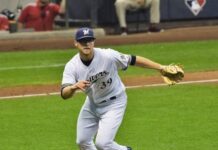
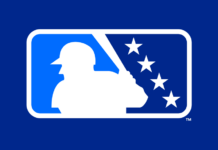
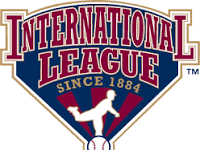
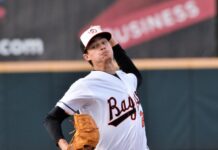
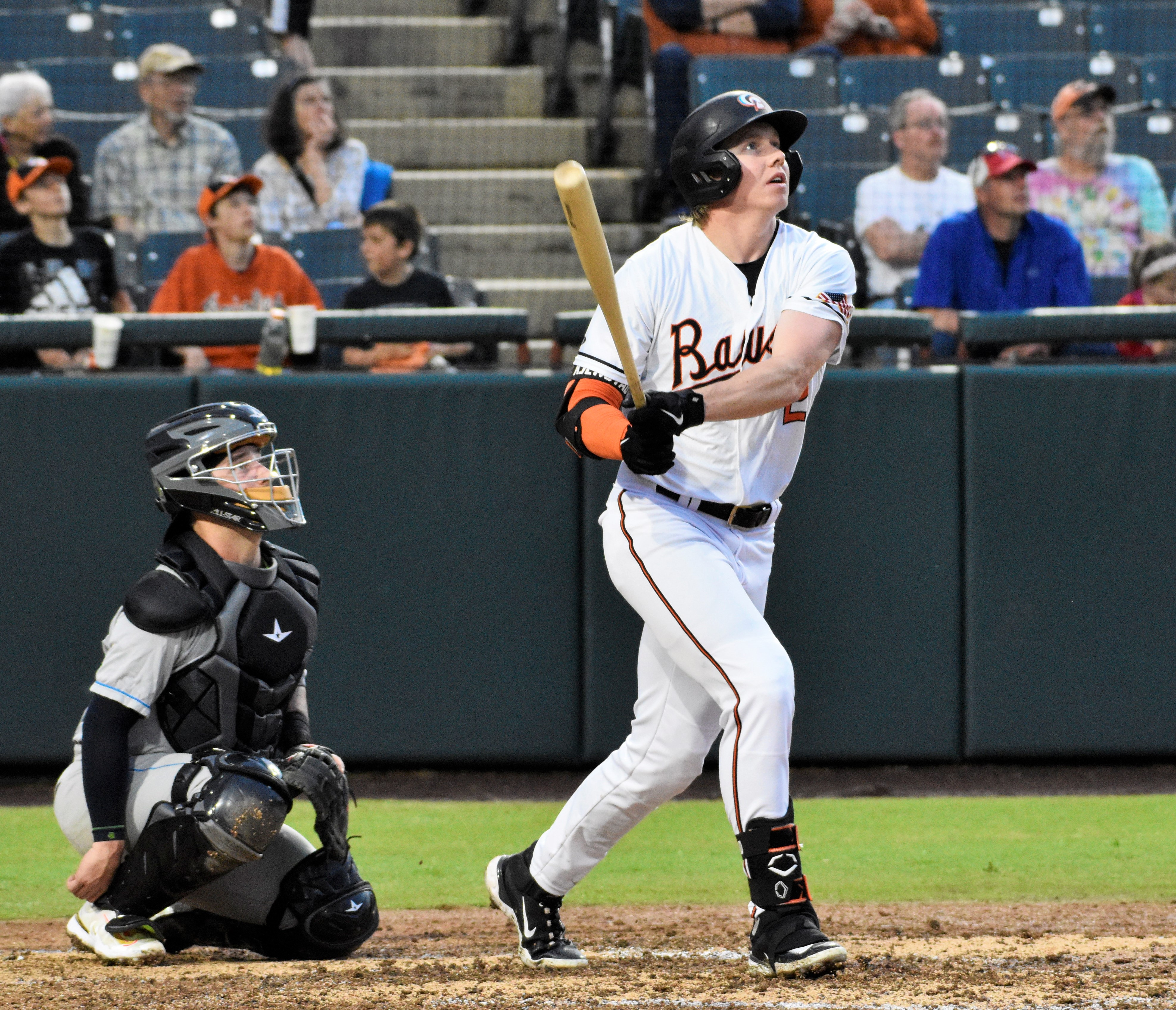
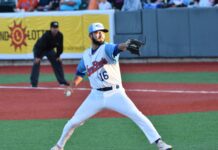
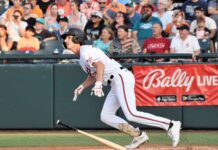
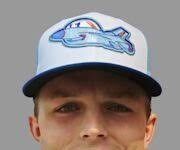
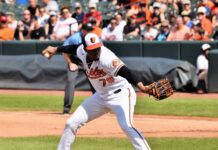
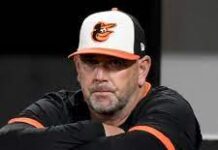
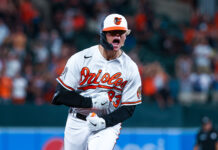
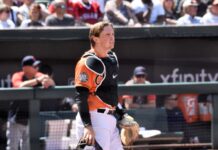
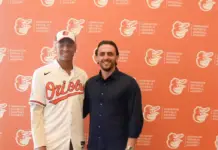
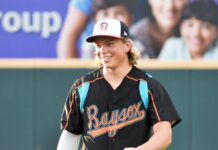
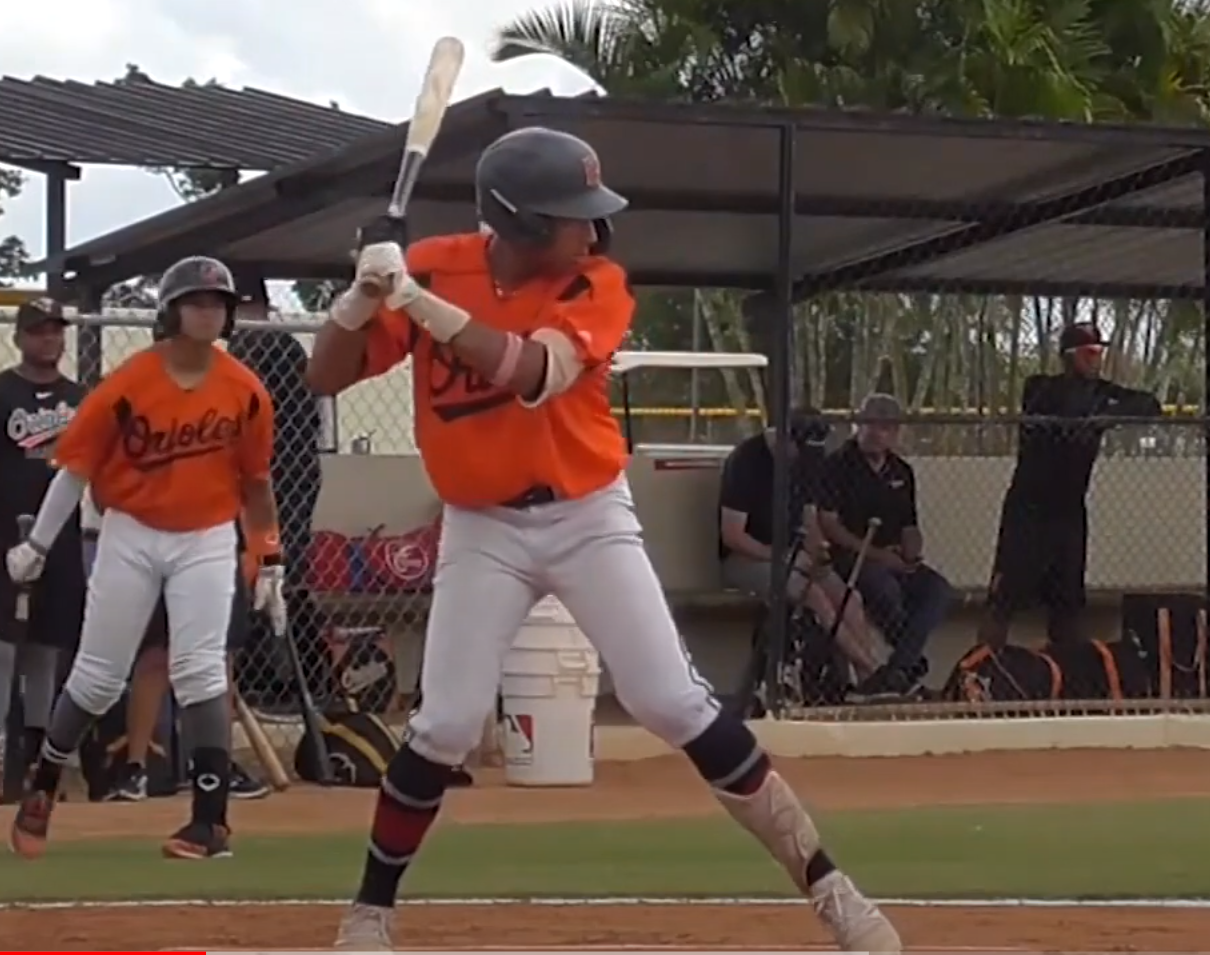
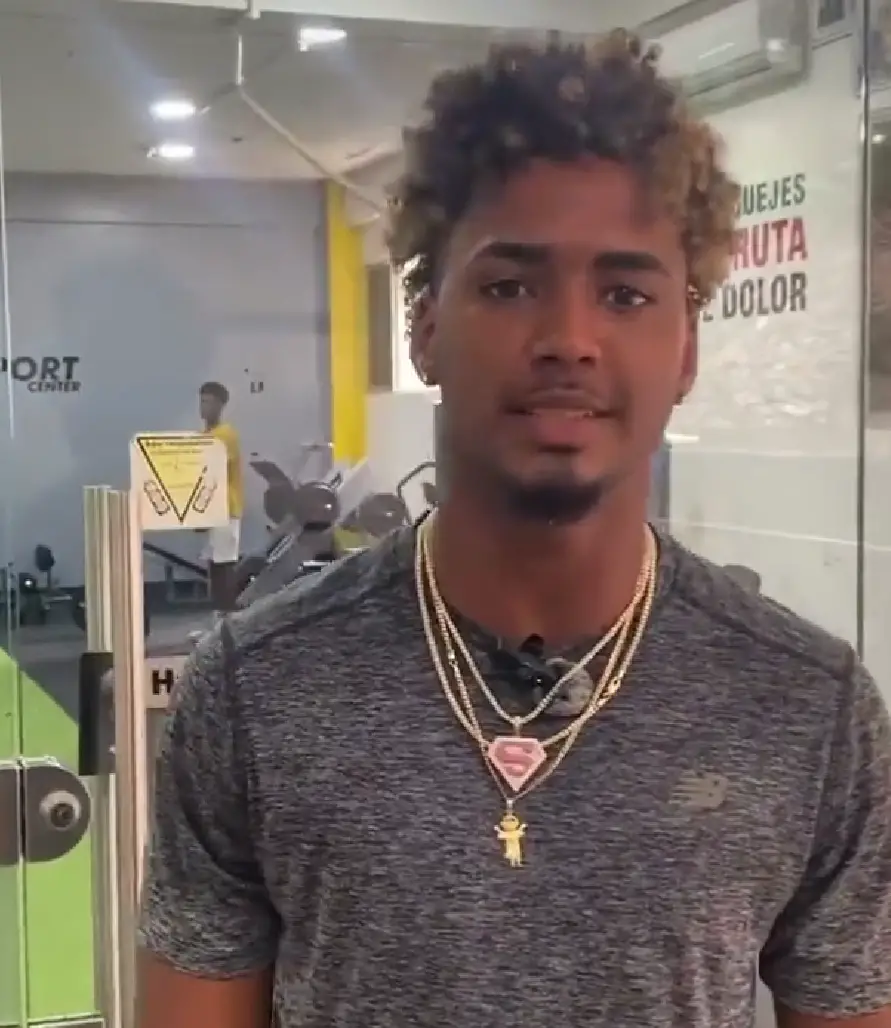
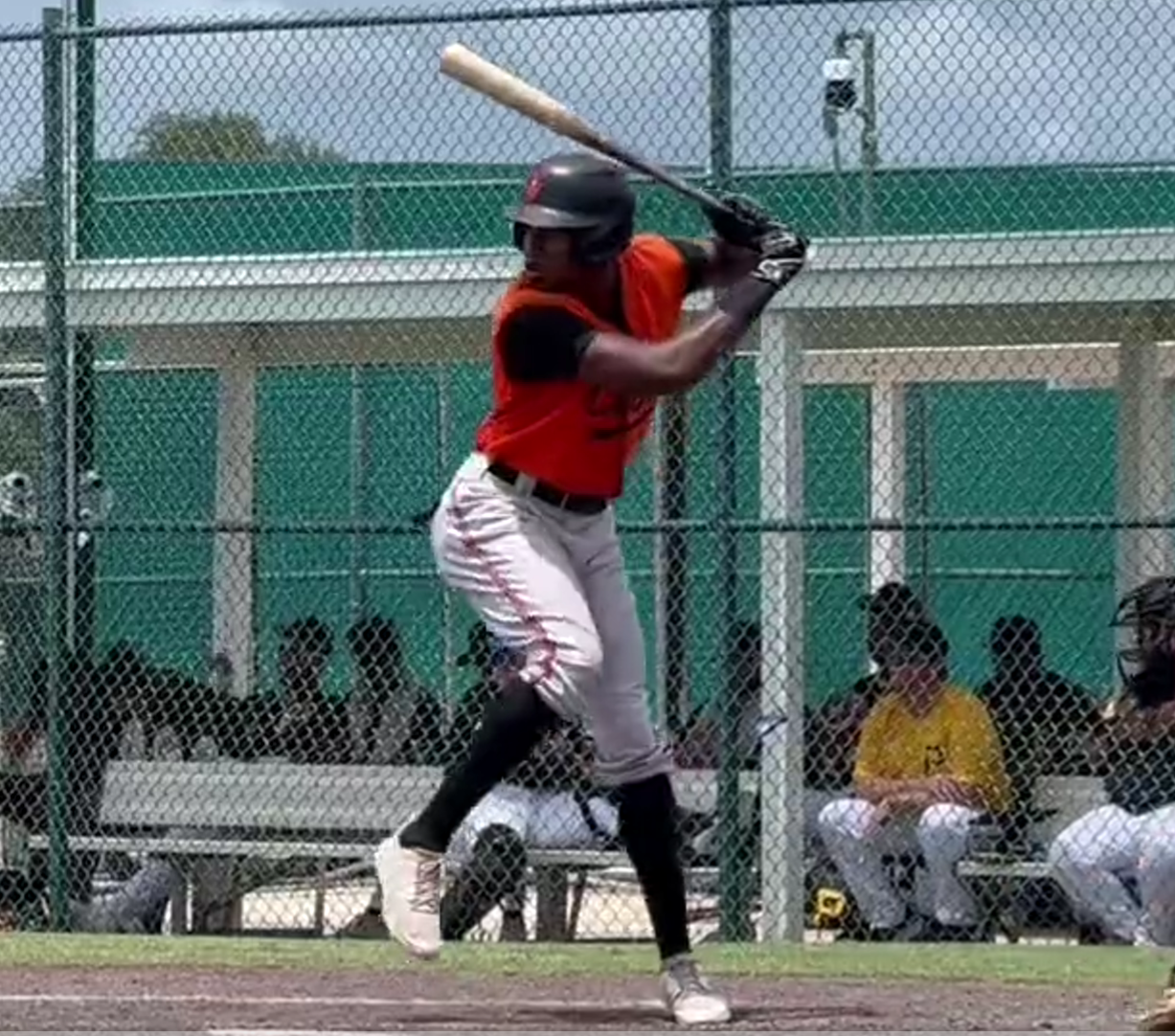
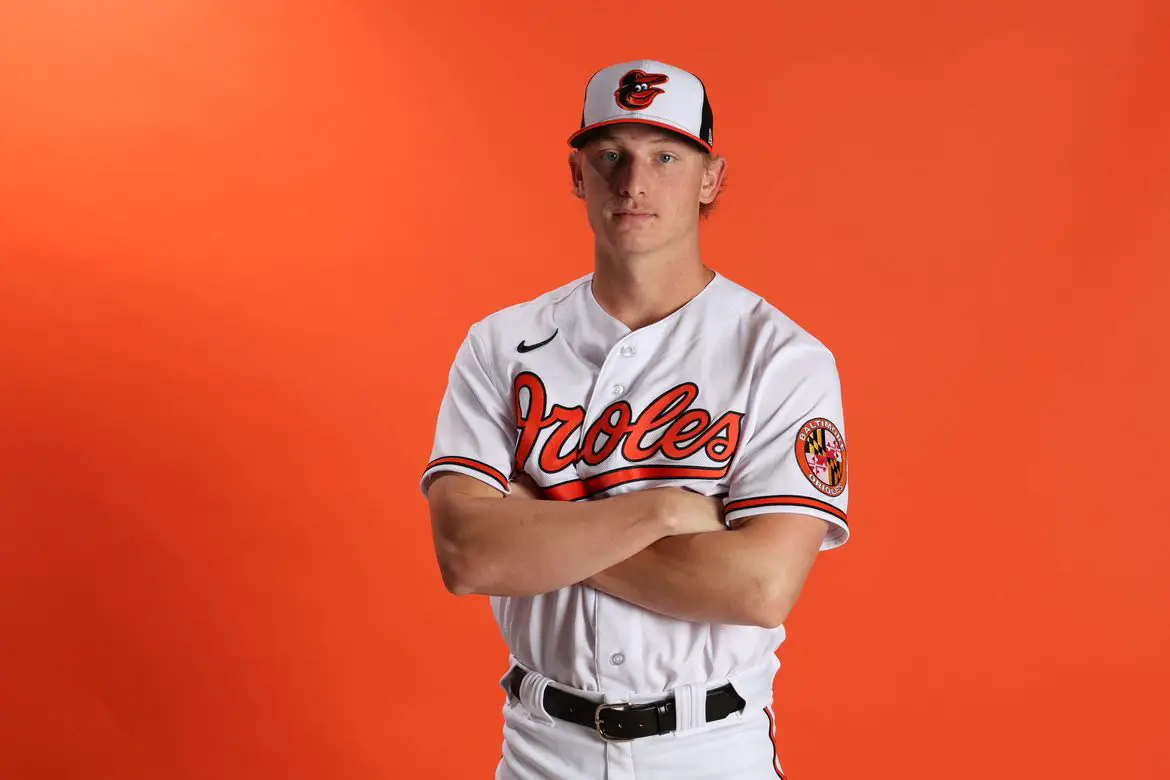
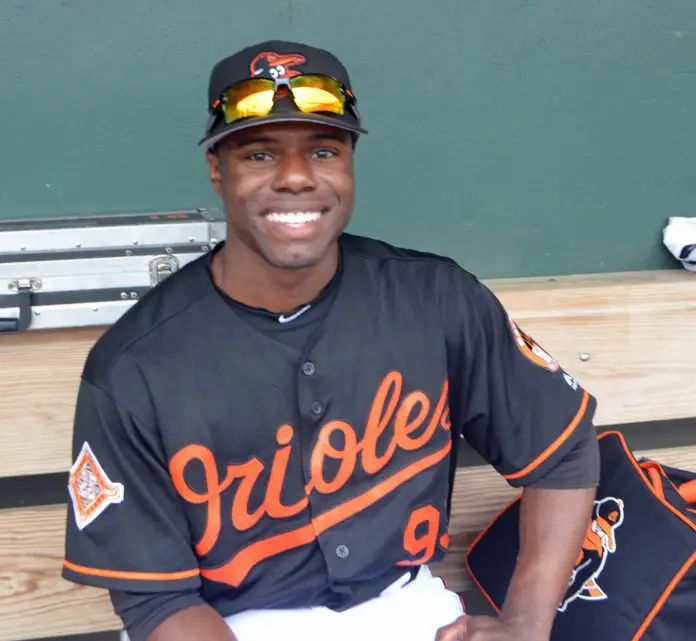



Comments are closed.